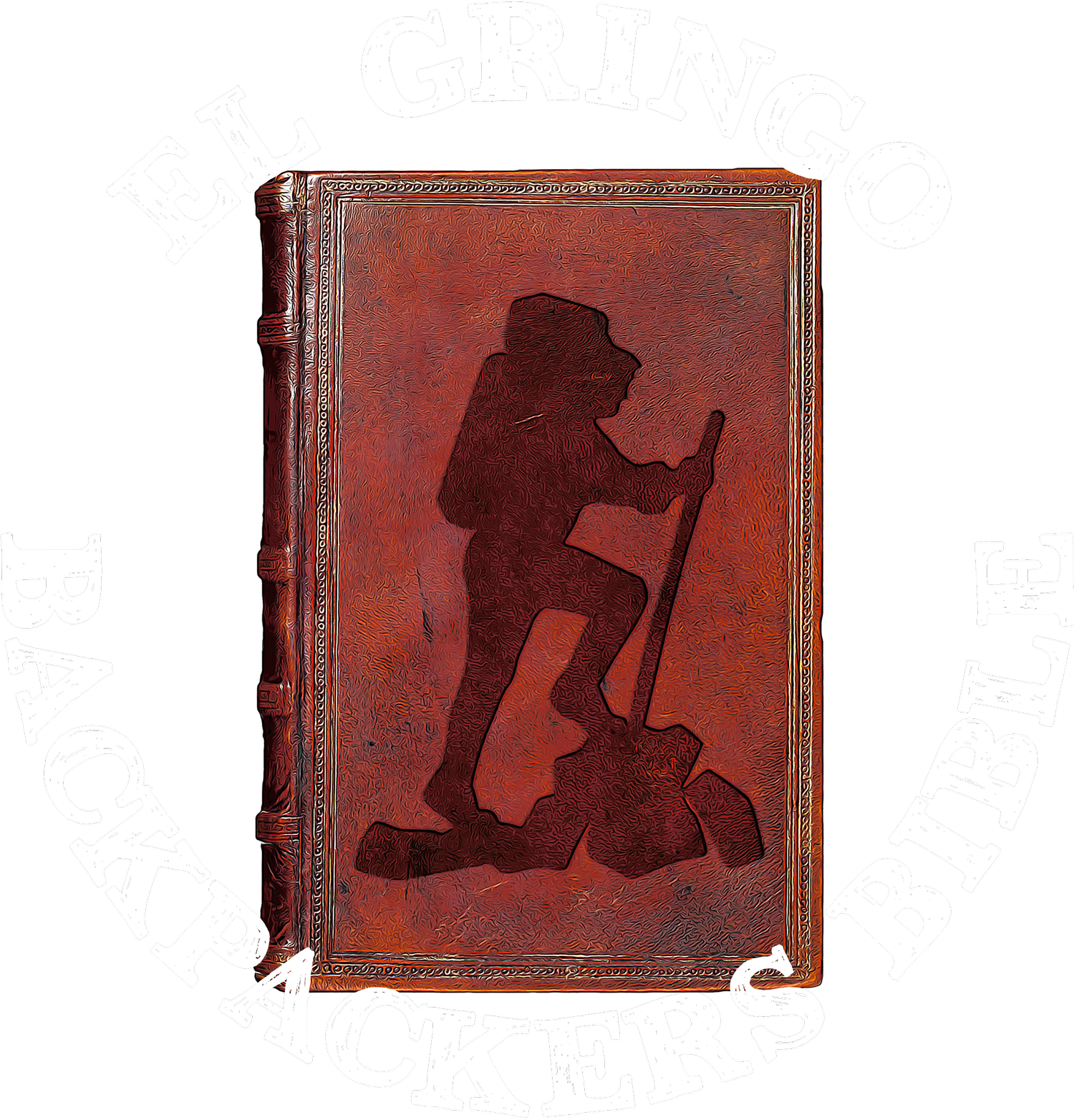
Top 10 Books to Read About Colombia:
A Backpacker's Literary Guide
+ Quick Links
One Hundred Years Of Solitude
The Sound Of Things Falling
Delirium
The Making of Modern Colombia: A Nation In Spite of Itself
Short Walks From Bogotá
Return to the Valley of Death
More Terrible Than Death: Massacres Drugs, And America’s War In Colombia
Colombia: Fragmented Land, Divided Society
My Cocaine Museum
News of a Kidnapping
So, you've booked your flight to Colombia. Your itinerary is looking packed. You're counting down the days until your departure. And your friends and family are sick to the back teeth of hearing about it. It's all you can talk about, and who can blame you?
We get it. And if you want our advice, one of the best excitement fixes is diving into a good book about your upcoming destination. Not only is this a great way of passing the time before your trip, but it's also a great way of getting through all the long coach journeys that await you. So dear reader, read on to discover our best books to read about Colombia.
We kick off this list with an entry from Colombia's most celebrated author – Gabriel García Márquez.
One hundred Years of Solitude was first published in 1967 and has become one of the most celebrated books of the 20th century. Today, the novel has been translated into dozens of languages. It even picked up a Nobel Prize for Literature.
For many, One Hundred Years of Solitude popularized 'Magical Realism' – a saying now forever tied to Colombia. Magical Realism depicts the real world as having an undercurrent of magic or fantasy. In this place, the inexplicable and fantastical becomes entirely plausible.
One Hundred Years Of Solitude follows seven generations of the Buendía family as they live out their lives in the mythical town of Macondo, isolated from the rest of the world. The story is as spellbinding as it is sprawling, sucking you into Márquez's vivid world of strange happenings while capturing the essence of Colombia, warts and all.
The Sound Of Things Falling is a poignant novel by award-winning author Juan Gabriel Vásquez. Set in Bogotá, The Sound Of Things Falling examines the rise and fall of Colombia's drug lords and their immediate and long-term impact on the average Colombian citizen.
In the novel, Yammara, a young professor in Bogotá, witnesses the death of his friend in a drive-by shooting – one of a long list of casualties in the war on drugs. Antonio grapples with PTSD, grief, and how his friend's time was cut short. Investigating the murder of his friend years later, Antonio grapples with how lives have been, and still are, affected by the violence of years gone by.
The story grapples with themes of time, memory, and how past events stay with us to harm our lives for years to come. The subject matter is heavy, but the story is brilliantly moving, written with an undeniable love for the city in which it is set. It's a brilliant insight into Colombia's past and attitudes to that past today.
Another novel set in Bogotá amidst the increasing violence of the 1980s, Delirium presents a powerful insight into the drug trade's impact on Colombian society.
Delirium is dark, offering a bleak outlook on Colombia in the 1980s and demonstrating how the memory of the country's lowest point affects Colombians today. But it also depicts just how far Colombia has come since.
Delirium tells the story of a young woman named Agustina who has fallen into madness. The book chronicles the factors – such as the drug trade and Colombia's civil war – that debilitated Agustina's mental state through four different perspectives. That of her husband, Aguilar, Agustina herself, her grandmother, and an ex-lover.
If you're looking to get your head into Colombia and grasp the country's history, pick up David Bushnell's 'The Making of Modern Colombia.'
Naturally, there's a heavy focus on Colombia's drug and civil war. But it'll also teach you a lot you didn't learn watching Narcos. The book covers Colombia's history from the present day to the times of the nation's indigenous settlers, from the arrival of the conquistadors and the independence wars to La Violencia and the birth of the FARC.
The book also dives headfirst into other aspects of life in Colombia, charting the country's art, culture, diversity, literature, and music.
The book was originally published in 1993, so don't expect the most up-to-date information. Nonetheless, it's an informative read and one that we really recommend.
This award-winning book unpacks Colombia's troubled past through stories told by normal people.
Tom Feiling, the book's author, has a clear affection for Colombia and used his time in the country to tell the story of Colombia's past, present, and future through the eyes of its citizens.
A good chunk of the book is set in Colombia's capital, Bogotá, which is examined in beautifully rich detail. The rest of the book follows Tom's journeys to the furthest reaches of Colombia.
Expect themes of reflection, rebirth, and hope in stories told by former guerilla fighters, indigenous tribesmen, and multi-millionaires. It doesn't pull any punches, but it is a great examination of Colombia's attempt to rebuild after some difficult times and makes for essential reading if heading to Colombia soon.
You'll need thick skin for this one. Penned by one of Colombia's most exciting young writers, Return to the Dark Valley is a book about returning home to a rejected homeland.
You'll follow the separate narratives of a tortured poet, a paramilitary fighter turned priest, and a diplomat/writer. Each character is running from a past in Colombia during the height of the violence in the '80s and '90s. As the story progresses, the characters converge, returning home to Colombia. Back home, they confront their respective traumas and guilt, as well as a denial that the country's newfound peace can last.
It's a bold piece of literature, harrowing and violent in places. But it's well worth it to reach the end of this extremely moving piece.
A gripping novel telling the tale of Colombia's drug war and the United States' role in the violence that consumed Colombia.
Robin Kirk draws on her experience and contacts as a human rights researcher to weave a rich tapestry of the U.S./Colombia relationship beyond the headlines we've seen in the news.
More Terrible Than Death focuses on the human cost of Colombia's conflict. It draws on personal interviews, anecdotes, experiences, and observations from members of the Colombian government, the U.S. government, FARC, cartels, and paramilitary leaders. The result charts Colombia's course from a civil war in the '40s and 50s to the violence of the '80s and '90s. All in heartwrenching detail as the human cost of these events is dissected.
This is essential reading for those who wish to know more about the U.S.'s role in Colombia over the last few decades.
Another one that looks to educate rather than tell a story. 'Colombia: Divided Land, Fragmented Society' offers the most comprehensive overview of Colombian history in the English language.
This volume begins by examining diverse Colombia's geography and how that geography shaped Colombia's earliest societies. After an in-depth look at Pre-Columbian cultures, European conquest and independence are examined. The book then details the early days of Simon Bolivar's Colombia and the eventual formation of Colombia's two main political parties. In the book's closing chapters, Sanford and Palacios examine the coffee boom, its impact on Colombia's economy, urban growth in Colombia's major cities, and the upheaval wrought by political unrest and violence between the 1940s and 1990s.
We're not going to pretend this is the most enthralling book in the world. However, if you really are interested in the history of Colombia, it's worth the effort.
My cocaine museum is a study on the lives of Colombia's poorer communities. The same ones who had so often been pulled into exploitation for gold and cocaine along Colombia's Pacific Coast.
The titular museum is a parody of Museo del Oro in Bogotá. It takes an assured swipe at the Museo del Oro for its failure to acknowledge the existence of slaves, who mined Colombia's wealth for some four hundred years.
In the book, the cocaine museum serves as a vantage point to observe the Afro-Colombian gold miners below as they're drawn into cocaine production in the rainforests of Colombia's untamed pacific coast.
Taussig uses his museum as a conduit, examining individuals, towns, and children who spend years mining for gold to no avail – all spiraling towards slavery, drugs, and colonialism. Above all else, My Cocaine Museum is a study of the forbidden. Substances, moral codes, and our sense of right and wrong.
Pablo Escobar. Murderer, terrorist, and the kingpin of a cocaine empire that raked in $70 million daily.
As calls for Pablo to be extradited grew louder, led by Colombia's president César Gaviria, Pablo grew desperate to take extradition to the United States off the table.
To that end, ten relatives of Colombian politicians were abducted and held hostage by Pablo's Sicarios as a bargaining chip.
News of a Kidnapping is the story of these events, told at breakneck speed by Colombia's most famous author, Gabriel García Márquez. It's a tense, terrifying read. And one that manages to mirror its gripping story with an exploration of good and evil – even in its doomed anti-hero Pablo Escobar.
You Might Also Like
Travel Insurance
The reality of travel isn't what you see on an Insta feed or in a Lonely Planet guide. Things go wrong, and shit hits the fan when they do. Find out why you need travel insurance, what it covers, costs, and where to get it.
Colombia Travel Tips
Is Colombia Safe? What’s Colombian food like? How do I get around? What’s the visa situation? Do I need any vaccinations to visit Colombia? Get the answers you’re looking for and lots more on our Colombia travel tips page.
Ultimate Packing List
Packing for South America can be a nightmare. It's a huge continent, with many countries and climates to plan for. Our packing list covers the budget backpacker, the frugal backpacker, the flashpacker, and the digital nomad.














